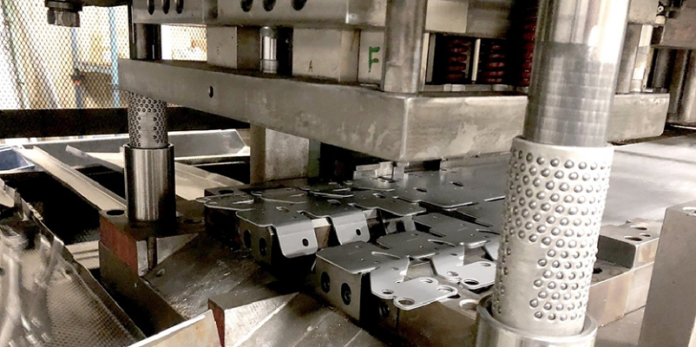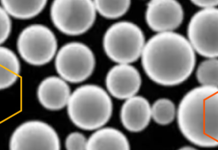Metals are put through different mechanical and chemical processes to get to their final shape, size or form. Stamping and shaping are some common examples of these processes. This article will guide you to understand what these processes are and probably what a metal stamping company goes through, what is involved, their overall effects and why they are essential.
Metal stamping
Ever looked at piece of metal and wondered how it attained its final shape? For example, a metal sheet may appear wavy, very flat or even have holes punctured through it.
Metal stamping is an extremely complex process that involves transforming a flat metallic sheet into different shapes. The flat sheet is referred to as a blank. Generally, the blank is fed into a system comprising of dies.
The dies are what are responsible for the shape changing. The process is cold forming and does not involve the use of heat to change the metal shape.
Some of the processes involved include flattening, swaging, piercing, coining, bending and cutting.
- Flattening. As the term suggests, it involves making the material flatter. This is done to either make it smoother or make it thinner if it is thick.
- Swaging. This is more commonly done in wires or rounded metals, not flat sheets. Basically, the process makes one end of the material narrower than the other end, usually to help it fit easily into an opening.
- Piercing. The process may also be referred to as punching and involves creating holes into metallic materials. For this step, you may use a punch press.
- Coining. Coining involves pressing sheet metals into specific shapes. For example, you mat pres a metal sheet into a coin.
- Bending. Sometimes, you may want to turn your flat metal sheet in a certain way or create a wave. This is called bending. To bend your material, you may use a bending machine or a mechanical, hydraulic or pneumatic brake press.
- Cutting. Cutting is regarded as a stamping process if the component is formed after cutting. The most common and effective way to achieve this is through laser cutting.
Types of stamping processes
There are three major process types.
- Progressive.
- Multi-slide.
- Deep Drawn.
Machines and Tools
To achieve a basic complete stamping process you need a blank, a force tool, and a die.
The blank is the metal part that requires shaping. It can be a thin metal piece and sometimes a wire. The force tool is used to administer force on the blank at a great force and fast speed.
In manual situations, the force tool can be a hammer. In a more industrious procedure, it may comprise of a hydraulic press. Lastly, the die is the part which contains the desired shape. The die then helps curve the metal into the required form.
Other additional features include a method of feeding the metal into and out of the system. The most used is a conveyer belt.
Why is the process beneficial?
Sheet stamping as an industrial process offers several benefits.
For example, the procedure enables production of identical shapes of metal at a lower cost and high speeds. Imagine wanting to convert millions of square feet into a certain shape. Doing so manually would mean spending a lot of working time.
And even then, achieving purely identical shapes would be nearly impossible. In addition, you would need to hire so many employees, or have few ones for a long time to achieve the feat. The process helps you to beat all these challenges and obtain perfection in a fraction of the time.
Another crucial advantage is that the process is entirely cold forming. This means that at no given point will you need to raise the temperature of the materials. As such, no extra cooling operations are necessary, hence saving resources. You will also not require additional postproduction cooling time thus making it time efficient.
Very little waste is also generated during the procedure. For example, during a metal piercing procedure, part of the sheet is pushed to the sides to create a hole. This is contrary to if you were to create a hole manually by cutting it out. Using the procedure therefore helps you maximize on the available material and reduce the amount of waste scraps afterwards.
Metal forming
Stamping is a type of metal forming. Metal forming is similar to the stamping process in that it results in the alteration of the shape of a metal. However, it does not result in a change in weight or cohesion. Metal forming is the process by which the surface, material and form properties of a metal are altered while retaining its mass and cohesion. Click here to read more.
Types of metal forming processes.
Some of the common examples of forming processes include the following:
- Roll Forming. In this procedure, you feed a long metal strip into a series of prearranged drum rollers. This is done continuously to ensure the metal attains a certain desired cross-section.
- Extrusion. Here, you make a die with a cross-section you want then force the metal into this die. The effect is you obtain metal with your desired cross-section.
- Braking. The press brake can be mechanical, hydraulic or pneumatic. It is done to give the metal the desired angle by bending it.
- Stamping. It involves using a tool, die and force to change the shape of a flat metal sheet.
Advantages of metal forming processes.
The procedure has a wide array of benefits. For example, they alter the shape of a material. The alteration leads to the material being in better mechanical or operational shape. In addition, the raw material, metal in this case is not wasted. The processes also enhance production of high volumes of identical, accurately sized and shaped metallic parts.
Metal stamping and forming processes are crucial in the making of metallic materials. They enable fast, and easy production, without necessarily altering the quality produced. In a sense, the steps are a saver without which shaping metals would be a long and tedious procedure.
The wastage minimization is also very capital intensive. Of emphasis also, is the fact that the processes yield material of uniformly required dimensions, a feat that is nearly impossible to do manually. Now can you imagine a world without forming and stamping processes?








